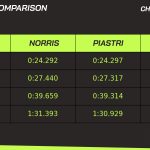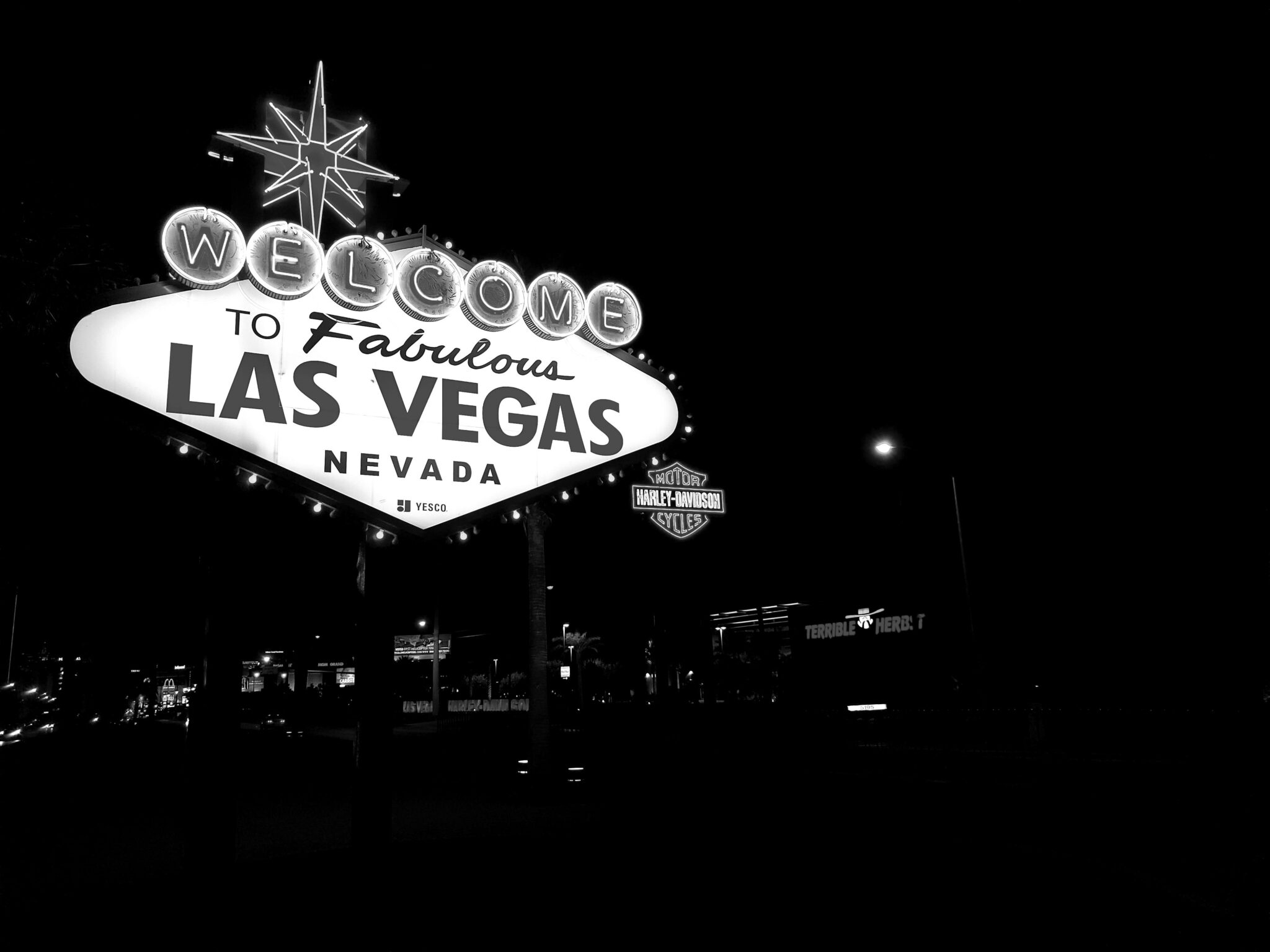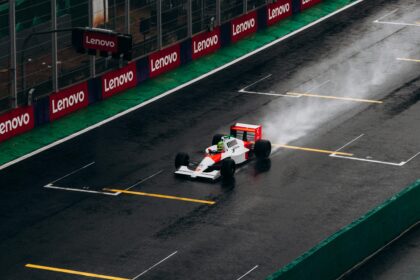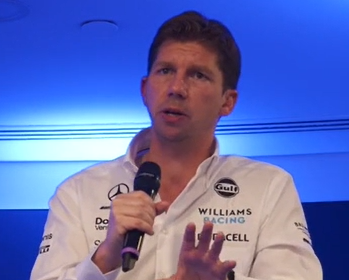If you want to know what it takes to master the Las Vegas Street Circuit, forget the glitz, the neon, and the PR fluff about racing under the lights. The real story is written in the millimeters between carbon fiber and concrete, in the cold sweat of drivers threading the needle at 200 mph, and in the technical nightmares that keep engineers awake long after the casinos have closed. The Las Vegas Strip Circuit is not just another street track – it’s a high-speed paradox: wide open and claustrophobic, smooth and treacherous, a place where the bravest are often the most precise, and the smallest mistake is punished with the ruthlessness of a casino pit boss.
- The Anatomy of a Street Circuit: No Margin for Error
- Sector by Sector: Where the Track Bites Back
- The Opening Gambit: Turns 1–5
- The Sphere of Influence: Turns 6–12
- The Strip: Speed, DRS, and the Art of the Gamble
- The Final Act: Turns 15–17
- The Technical Challenge: Setup, Strategy, and Survival
- The Human Factor: Nerves, Rhythm, and the Ghosts of the Past
- Lessons from History: The Circuit’s Short but Eventful Life
- The Modern Relevance: Why Las Vegas Matters
- Waste a bit more time
The Anatomy of a Street Circuit: No Margin for Error
Let’s start with the basics. Street circuits are the ultimate test of discipline and nerve. Unlike the forgiving run-offs of modern Tilkedromes, Las Vegas offers little more than a polite invitation to the wall if you overstep the mark. As Fanatec’s recent blog on mastering street circuits puts it:
A street circuit demands precision, patience, and consistency. Drivers must build confidence gradually, learning the track’s rhythm and landmarks before pushing toward the limit. Because there is essentially no margin for error, rushing rarely pays off.
Fanatec Blog
The Las Vegas Strip Circuit, with its 6.2 kilometers of city roads and purpose-built sections, is a Frankenstein’s monster of a track: part Monaco, part Monza, and all attitude. It’s the second-longest track on the calendar, with 17 corners and a 1.9-kilometer flat-out blast down the Strip. But don’t be fooled by the long straights – the real challenge lies in the corners, where the walls are always just a heartbeat away.
Sector by Sector: Where the Track Bites Back
The Opening Gambit: Turns 1–5
The lap begins with a heavy braking zone into Turn 1, a sharp left-hander that sets the tone for the lap. The entry is bumpy, the grip unpredictable, and the temptation to brake late is almost always punished. As one sim racer put it in a recent YouTube guide:
Brake hard while shifting down quickly, but be careful not to lock up, as the entry is slightly bumpy, hook the front left wheel over kerb on entry to help rotate the car, ease back on the throttle to get a good exit into turn 2.
Las Vegas F1 24 Track Guide
Turn 2 flows immediately after, demanding smoothness and momentum. Then comes the double right-hander of Turns 3 and 4 – tricky, technical, and a favorite spot for the over-ambitious to ruin their lap before it’s even begun. Turn 5, a slow-speed right-hander, is all about exit speed. Get greedy with the kerb, and you’ll be fighting the rear end all the way down the next straight.
The Sphere of Influence: Turns 6–12
Sector 2 is where the circuit bares its teeth. Turn 6 is a fast left-hand curve, taken flat-out if you dare. But the real test comes at the 7–8 chicane, one of the slowest and most technical parts of the lap. Patience and precision are everything. As the Fanatec blog notes:
Braking should be done with the car as straight as possible. This minimizes braking distance and reduces the risk of lock-ups on the typically low-grip surface.
Turn 9, a slow left-hander, is the gateway to the high-speed section. Here, the walls seem to close in, and the temptation to use every inch of track is balanced by the knowledge that the smallest misjudgment will end your session. Turns 10 and 11 are flowing right-left bends, crucial for maintaining momentum into the all-important Turn 12.
Turn 12 itself is a slow-speed left-hander with a nasty habit of catching out even the best. In 2023, it claimed Lando Norris, whose crash brought out the Safety Car after just three laps. In 2024, it was Lewis Hamilton’s turn to suffer, a mistake in qualifying relegating him to P10 on the grid. As the official circuit guide recounts:
In 2024, Lewis Hamilton could only manage P10 on the grid after making a mistake at this corner in qualifying. He had been fastest on Friday and made amends in the race, finishing second behind teammate George Russell in a Mercedes 1-2.
Las Vegas Strip Circuit Turn-by-Turn Guide
In 2023, the Safety Car was deployed after just three laps when Lando Norris lost control of his McLaren on the approach to this quick left-hander.Las Vegas Strip Circuit Official Guide
The Strip: Speed, DRS, and the Art of the Gamble
After Turn 12, drivers are unleashed onto the Strip – a 1.2-mile straight where top speeds exceed 229 mph (368 kph). This is where the brave – or the foolish – deploy every last bit of battery and hope their setup is slippery enough to survive the DRS train. In 2024, Williams’ Alex Albon set the fastest speed of the season here, maxing out at 13,194 rpm in eighth gear.
But the straight is not just about raw speed. The high-speed kink of Turn 13 is taken flat-out, but the real action comes at Turn 14, a left-hander at the end of the Strip and the prime overtaking spot on the circuit. In 2023, the lead changed hands here four times, and in 2024, it was the scene of some of the most dramatic moments of the race.
On lap 37, Max Verstappen retook P1 from Leclerc to set up victory in the inaugural Las Vegas Grand Prix. But Turn 14 had one final twist, when Leclerc made a thrilling last lap pass on Sergio Perez to secure second place to the delight of the on-looking fans. Leclerc experienced 7G in deceleration force during the lunge, earning the 2023 Overtake of the Year.Las Vegas Strip Circuit Official Guide
The Final Act: Turns 15–17
The lap ends with a right-left-right sequence that demands absolute commitment. In 2024, Williams’ Franco Colapinto found out the hard way, crashing heavily in qualifying after clipping the inside wall at Turn 15. The final kink, Turn 17, is taken at full throttle, but track limits are always lurking, ready to ruin a lap for the overzealous.
The Technical Challenge: Setup, Strategy, and Survival
Mastering Las Vegas is not just about bravery – it’s about engineering discipline. The surface is smooth but grip levels vary wildly, especially at night when temperatures plummet. Teams run a softer setup than usual, with increased ride height and softer anti-roll bars to absorb the bumps and maintain traction. Differential settings are crucial: a more locked diff on acceleration to prevent oversteer, a more open diff on deceleration for better rotation.
As the Fanatec blog explains:
A street circuit typically requires a softer overall setup compared to a permanent racetrack. Softer suspension and slightly increased ride height help absorb bumps and imperfections while improving braking stability and traction through controlled chassis movement.
Battery management is another key factor. The long straights tempt drivers to deploy everything, but the technical sections demand careful energy conservation. Overcook your ERS strategy, and you’ll be a sitting duck on the Strip.
The Human Factor: Nerves, Rhythm, and the Ghosts of the Past
If you think this is just another modern street race, think again. The Las Vegas Strip Circuit is a throwback to an era when mistakes had consequences and the bravest drivers were those who could dance on the edge without falling off. It’s no coincidence that the most successful drivers here are those who combine raw speed with a surgeon’s touch.
As one sim racer put it in a recent YouTube guide:
Inputs on throttle, brake, and steering should be smooth and measured. Overdriving (pushing beyond what the car and track can tolerate) must be avoided at all costs.
How to master Vegas on F1 24
And let’s not forget the mental game. Street circuits are a mental exercise more than an instinctive one. The fastest driver is the one who can consistently approach the limit without ever crossing it. In Las Vegas, the ghosts of past mistakes are never far away, and the pressure to deliver is amplified by the glare of the world’s most famous neon.
Lessons from History: The Circuit’s Short but Eventful Life
The Las Vegas Street Circuit may be a newcomer, but it has already carved out a reputation for drama. Since its debut in 2023, it has hosted just a handful of Grands Prix, but each has delivered its share of chaos and controversy. From Norris’s crash in 2023 to the wheel-to-wheel duels between Verstappen and Sainz in 2024, the circuit has quickly become a favorite for fans and a nightmare for engineers.
According to historical data, the most difficult and technically challenging corners are Turns 9 and 10 – a sequence of fast left-handers that demand absolute precision. While there have been no major historical incidents at these corners yet, the potential for disaster is ever-present. As the circuit’s history continues to unfold, you can be sure that these turns will claim their share of victims.
The Modern Relevance: Why Las Vegas Matters
In an era when Formula 1 is often accused of becoming too sanitized, too predictable, the Las Vegas Street Circuit is a welcome antidote. It rewards the brave, punishes the careless, and reminds us that, at its core, racing is about risk and reward. The technical challenges here are not just academic – they are the difference between glory and ignominy.
As the Mercedes Esports team’s Jarno Opmeer demonstrated in his track guide, even the best can be caught out by the circuit’s unique demands.
Mercedes Track Guide
And as the sport continues to evolve, Las Vegas stands as a testament to the enduring appeal of circuits that demand more than just horsepower. Here, the key to mastery is not just speed, but the ability to dance on the edge of disaster – and live to tell the tale.











